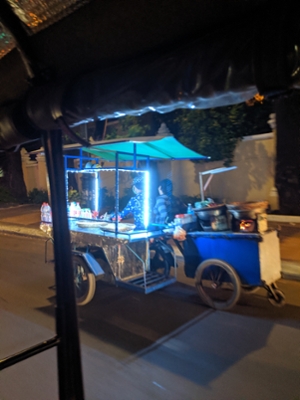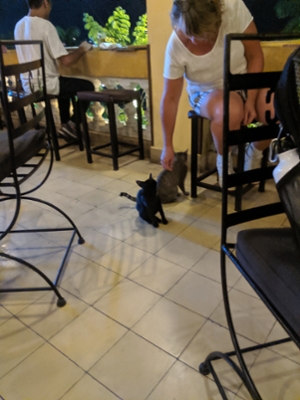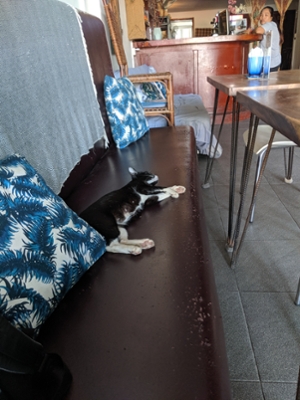June 6

In this blog I’ll go a bit more in depth about my work with Open Development Cambodia and what I’m researching this summer. ODC is an open data platform focused on providing reliable data about any and all development in Cambodia. They collect and publish information on everything from education statistics to the rate of deforestation in the country. They also provide a lot of editorial information, with the goal of providing neutral and balanced information about the state of the country. On top of that, they also work within local communities to educate people about open data along with the GIS and other mapping technologies that they use. They are an amazing organization run by a group of people who are passionate about this work and in my first two weeks I’ve seen first-hand how hard they work at their jobs.
As for my actual work, I’ll be writing a report for them on the state of sustainable development in Cambodia, specifically around the rapidly-developing coastal region, and the legal structures that play into this issue. I knew going in that this would be a fairly big project, covering a wide range of topics, and so far that’s been the case. I spent the first few days just researching the basics of sustainable development policies, both within Cambodia and from international organizations. Cambodia has signed onto a UN scheme that is organized around the Sustainable Development Goals (SDGs), which organize development into 16 different categories aimed at improving living standards around the world. They are all broken down further into specific goals and indicators to track whether those goals are being achieved. There’s a lot of technical knowledge behind the SDGs and they’re a key way that Cambodia and ODC are defining their own goals. So far I’m just using them as a guide for my research, and hopefully later on to figure out where Cambodia’s laws and institutions may be falling short and where they might improve.
Slowly but surely, I’m starting to get a handle on the laws and policies that really matter in sustainably developing the country. Specifically, I’m learning a lot of Cambodian land law and some environmental and investment law as well. Cambodia runs on a civil system inherited from the days of French rule, and so navigating the differences between that and the common law system I’ve learned has been a challenge.
Outside of work, I’ve been having an amazing time getting to know the city and exploring everything Cambodian cuisine and culture has to offer. Tuol Tom Poung, aka Russian Market, is a very expat-friendly neighborhood, in that there are tons of restaurants, bars, and shops that are either owned by foreigners or targeted to them. Among other things, I’ve found a climbing gym and a microbrewery, both of which attract tons of Westerners living here long term. For all that, there’s still a local neighborhood feel to the place, and given the number of motorbikes and food stalls selling whole ducks, you’re not going to forget what country you’re in.

Gives a new meaning to the phrase fast food.
And if you can't tell, yes they left the stove on
I also went to the National Museum, located near the palace. It has a ton of statues and artifacts, mostly from the Angkor region, which seems to be more important historically than Phnom Penh. At its height in the 15th century it was the largest pre-industrial city in the world, so I can see why it’s the focus of most of the tourism here. I have to say, though, I was way more interested in the traditional Khmer architecture of the building than the actual displays. The building was built in the early 20th century and has the traditional tiered roofs and ornamentation unique to this culture. It’s also an absolute oasis of green tranquility in the middle of a very busy city that doesn’t have a ton of public space.

This week I also had dinner at the Foreign Correspondent’s Club. If you don’t know, the FCC was initially a gathering place for Western journalists when the country opened up in the 90s. These days it probably attracts more tourists than journalists, but is still a great place in the city center to visit and feel like you’re in the center of the action. One surprising thing about it is that there was a little herd of cats wandering in and out of the restaurant. Now that I’ve noticed them I think this is actually pretty common, given that most Cambodian restaurants are open to the street and animals tend to just wander around the streets. Still, watching them play with the strap of my backpack during dinner was pretty cute.


This weekend I’ll be heading to the coast, both to see the area that I’m researching and to treat myself to some beach time. I’ve been told that the islands off Cambodia’s coast are some of the most unspoiled and beautiful in the region, and I can’t wait to see them for myself. Stay tuned!